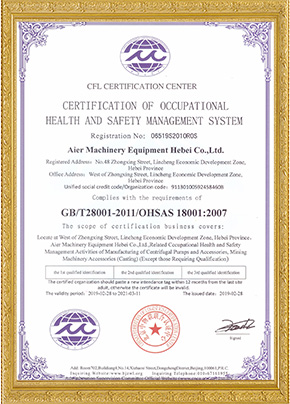Nov . 11, 2024 18:33 Back to list
submersible pump for slurry
Submersible Pumps for Slurry An Overview
Submersible pumps play a crucial role in various industrial applications, especially when it comes to handling slurry – a mixture of solids and liquids. This type of pump is designed to operate underwater, allowing it to effectively transport thick mixtures that would be challenging for standard pumps. Understanding the features, applications, and benefits of submersible pumps for slurry can help industries optimize their operations.
Features of Submersible Slurry Pumps
Submersible slurry pumps are engineered specifically to withstand the abrasive nature of slurries. One of the primary features that distinguish them from other pumps is their construction, which typically includes a robust impeller made of high-strength materials like chrome or stainless steel. This construction helps reduce wear and extends the lifespan of the pump in harsh working conditions.
Another critical feature is the pump's ability to handle solid particles of varying sizes. Submersible slurry pumps are designed to move not only water but also slurries containing gravel, sand, or even heavier materials. The design often incorporates a vortex or semi-vortex impeller that minimizes the risk of clogging, allowing for a more efficient operation.
Additionally, these pumps are usually equipped with a built-in motor that is sealed to prevent water ingress, ensuring reliable performance even in submerged applications. Many models also offer adjustable configurations to meet specific depth and flow rate requirements, providing versatility for different industrial settings.
Applications
The applications of submersible slurry pumps are numerous and span across various industries. In mining and construction, these pumps are commonly used to remove slurries resulting from mining operations or to dewater sites. They are essential for keeping excavations free of excess water and sediment, which is critical for maintaining safety and productivity.
submersible pump for slurry

In the wastewater treatment industry, submersible slurry pumps play a pivotal role in transporting sludge. They help move material from one treatment stage to another, allowing for efficient filtration and processing. Similarly, in the agricultural sector, these pumps are used for handling slurry created from manure, optimizing the irrigation process and improving soil quality.
The oil and gas industry also employs submersible pumps in applications where oil, water, and sediment are mixed, ensuring effective extraction and separation of resources
. This versatility makes submersible slurry pumps invaluable tools in modern industrial operations.Benefits of Submersible Slurry Pumps
The benefits of using submersible slurry pumps are manifold. Firstly, they enhance operational efficiency by providing reliable and continuous fluid movement, reducing downtime associated with clogged or malfunctioning pumps. Their ability to operate underwater means that they can be placed directly at the fluid source, minimizing the need for additional piping and reducing associated costs.
Moreover, these pumps are designed to be energy-efficient, which can lead to cost savings over time. With advances in technology, many submersible slurry pumps now come with features such as variable speed drives, allowing operators to adjust the flow as needed while further conserving energy.
Another advantage lies in their reliability and ease of maintenance. Many submersible pumps are designed with user-friendly features that allow for straightforward maintenance procedures. This reduces labor costs and ensures that pumps function optimally for extended periods.
Conclusion
In summary, submersible pumps for slurry are vital components in various industries that deal with challenging fluid mixtures. Their robust design, efficiency, and versatility make them ideal for applications ranging from mining to wastewater treatment. By investing in high-quality submersible slurry pumps, industries can enhance their operational efficiency, reduce costs, and improve overall productivity, making them an indispensable tool in modern industrial processes.
-
Wholesale Casting Dredge Pump Part - High Quality China Manufacturers & Suppliers
NewsJul.04,2025
-
High Quality Slurry Pump Seals Reliable China Suppliers & Manufacturers
NewsJun.24,2025
-
High Quality Portable Submersible Slurry Pump Supplier & Manufacturer from China
NewsJun.10,2025
-
Slurry Pump Parts Manufacturer – High Quality Rubber Spare Parts from China
NewsJun.10,2025
-
High Quality 1/3 HP Submersible Sump Pump with Vertical - Reliable Supplier & Factory Price
NewsJun.10,2025
-
High-Efficiency Centrifugal Slurry Pumps India
NewsJun.10,2025
